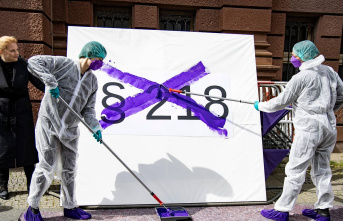MORE INFORMATION
photo gallery collection of photos of Martín-PinillosYou see, landing at Cadiz, or to cross the Ebro for the great battle, also in small tanks, which seem to toy, way of Guadalajara, where they lost the only major battle that won the republican troops in the Civil War. These are photographs of episodes of the Spanish war in which they participated the Italian soldiers of the Body of Troops Voluntary, nearly 50,000 men. Others are public events in which, for example, it is clear that general Franco with his daughter or decorating a soldier.
As other photographic collections of the conflict, this has been decades in the hands of individuals, until finally sees the light. Are 212 images of vintage paper that belonged to the colonel Luis Martín-Pinillos (1877-1956), a soldier, an africanist who participated in the coup d'état of 18 July 1936, then was military governor of Cáceres and, from the 29 of July, 1937, Franco what stood in front of the powerful and fearful Inspection of the Concentration Camps of Prisoners of war (ICCP), the body in charge of articulating the repressive system. The services rendered to the regime earned him the promotion to general.
Martin-Pinillos was not a photographer, the images that were in his power and has gained the Ministry of Culture, for 15,000 euros to a granddaughter of his, was a gift from friends and Italian allies. Martín-Pinillos started that relationship with the heads of the troops sent by Mussolini when they fought together in the first siege of Cadiz, which managed to break through the republicans. “He made no use of these photos, have been in the hands of the family. They were in a box, but in good condition,” says Teresa Engenios Martin, head of the Coordination Service Archives belonging to the Ministry of Culture.
Almost all of the snapshots lead to the reverse the seal of the Istituto Nazionale LUCE (Libera Unione Cinematografica Educativa), organ of propaganda Italian, created in 1920, which was put to the orders of the fascist Italy since 1924. When the Civil War broke out, the LOOKS he sent several professionals to Spain to ascribe the expected feats of war by their troops. He even had a permanent headquarters in Salamanca, from December of 1936, under the Office of Press and Propaganda italoespañola, whose forehead was the journalist Guglielmo Danzi. Precisely this is what you see in one of the snapshots of the arm of general José Millán-Astray, posing at the doors of the new Cathedral of Salamanca. Danzi was the liaison informal between Franco and Mussolini.
The general Millán-Astray (right) with journalist Guglielmo Danzi in front of the new cathedral of Salamanca. URBANI CDMH / MINISTRY OF CULTUREin Addition to the material to work, came to Spain a chief of division, two operators of cinema, a photographer and three technicians. There were up to three reporters who devoted themselves to that task, among which highlighted Guido Giovinazzi. Its primary mission was to document photographic and cinematographic usage events in which to participate with their soldiers, but also civil ceremonies and military, folkloric manifestations... in Addition, had a more ambitious goal, as pointed out by the scholar Felix Monguilot-Benzal in an article published by the Filmoteca Valenciana: "Create the basis for a subsequent assertion of the cinematography Italian between the public and the employers". Therefore, that they began to appreciate the Italian brand in the Spanish spectators in order to facilitate the subsequent penetration of their films.
The arrival of the Italian troops occurred at Cadiz, in February 1937, as shown in one of the images. After the failure in Guadalajara, these soldiers were sent to several foci of struggle, as Sigüenza or the Aragon front, where they participated in battles as bloody as Belchite, Teruel, and the Ebro. Between shots there is a spectacular bridge of Fraga (Huesca) sunk and others more curious, as the aerodrome of Soria, in which along a plane waiting to get in combat, they see a wagon drawn by oxen.
The photographers continued throughout the conflict the soldiers from his country there where entered in combat, whether it was the cerro de Los Ángeles (Madrid) and Málaga... There are, however, images of fight, there are wounded, but they are shots of the before and the after. The Italian volunteers returned to their country in October, 1938, and with them came the end of the presence of LOOKS in Spain.
Date Of Update: 26 December 2019, 09:00










